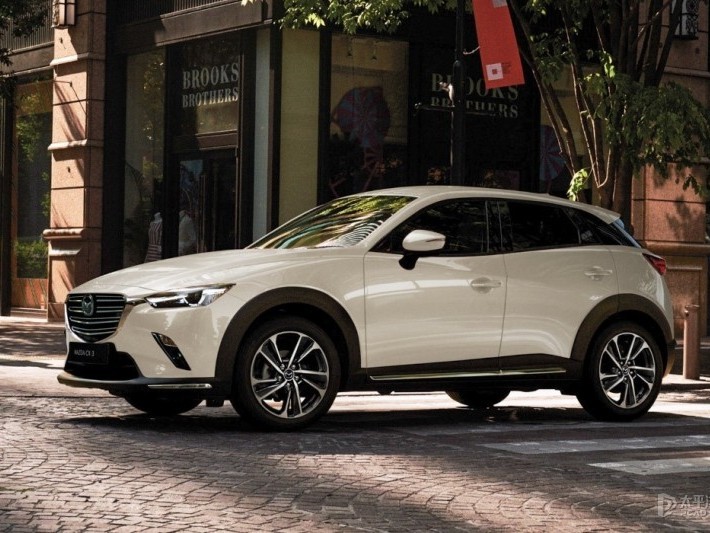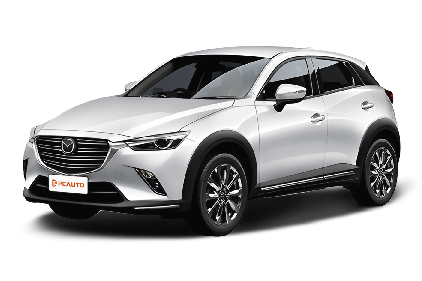Q
How to replce the key battery of Mazda cx 3
Swapping out the battery in your Mazda CX-3 key fob is actually a piece of cake. First things first, you'll need a CR2025 coin battery – that's the standard type for most Mazda keys, and you can grab one easily at convenience stores or electronics shops around Malaysia. To get started, slide your fingernail or a thin flat tool into the groove on the side of the key and gently pry open the case. Take it easy though, you don't want to crack the plastic. Once it's open, you'll see the battery compartment. Use a toothpick or a plastic tool to pop out the old battery, then drop the new one in with the positive side facing up. Finally, snap the case back together and press firmly to make sure it's properly latched.
It's a good idea to check your key fob battery every 1-2 years. If you notice the remote range getting shorter or the buttons feeling unresponsive, that's usually your cue to replace it. Day to day, try to keep your key away from extreme heat or moisture – both can drain the battery faster. If a new battery still doesn't fix the problem, there might be an issue with the key's electronics. In that case, your best bet is to hit up a Mazda authorized service center. They've got locations in major cities all over Malaysia, like KL, Penang, and Johor Bahru, so professional help is never too far.
Now, depending on the year your CX-3 was made, the key fob design might vary slightly, but the basic battery replacement steps stay pretty much the same. If you're ever unsure, the owner's manual that came with your car should have step-by-step instructions too.
Special Disclaimer: This content is published by users and does not represent the views or position of PCauto.
Latest Q&A
Q
Is the 2020 Volvo XC90 safe?
The 2020 Volvo XC90 shines when it comes to safety. It's packed with a ton of active and passive safety tech, including things like City Safety, automatic emergency braking, lane keeping assist, blind spot monitoring, and even automatic cross-traffic braking. All this stuff really helps cut down on accident chances. The XC90 scored a five-star rating in Euro NCAP crash tests, which says a lot about how well it protects passengers. The body's built with high-strength steel, so it soaks up and spreads out crash energy effectively. On top of that, it comes standard with seven airbags, including a knee airbag, giving everyone inside solid protection. What's cool is that Volvo has always made safety its core brand value—their safety tech has been tested over the years, so you know it's reliable. If safety is a top priority for you, this is a solid pick. When you're shopping for a luxury SUV, besides brand and features, safety should be a big factor too. After all, it directly affects you and your family's lives.
Q
Is the XC90 made in China?
The Volvo XC90 isn't currently produced in China. Its main production line is at the Torslanda Plant in Sweden, which supplies global markets, including right-hand drive models. While Volvo does have a manufacturing facility in Daqing, China, that builds some models, the XC90 isn't among them. For consumers, knowing where a vehicle is made can offer insights into production standards and supply chain characteristics. For instance, models from the Swedish plant adhere to Europe's stringent manufacturing processes and environmental requirements. Additionally, as a global luxury brand, Volvo implements a unified quality control system across all its factories, ensuring that safety and reliability meet the brand's standards, regardless of production location. It's worth noting that when shopping for a luxury SUV, beyond the country of origin, factors like powertrain options, intelligent driving assistance systems, and after-sales warranty policies often better reflect a vehicle's overall value than just where it's built.
Q
How much is a 2020 Volvo XC90 worth?
The current used car price for a 2020 Volvo XC90 ranges from approximately RM200,000 to RM300,000, depending on the vehicle's condition, mileage, trim level, and whether it's still under the original factory warranty. The higher-spec T8 plug-in hybrid models or those equipped with the Polestar performance upgrade package typically cost 10% to 15% more than the standard T5 or T6 versions. This SUV is known for its Scandinavian luxury design, standard-fit City Safety active safety system across the range, and spacious 7-seat layout. It holds its value better than comparable European SUVs in the used market, though it's important to check for complete service records—especially since maintenance costs for the air suspension and hybrid system can be relatively high. Before purchasing, it's advisable to check the vehicle history report through Volvo Selekt's official certified pre-owned channel or commission a third-party inspection agency to assess the mechanical condition. Competitors in the same price bracket, such as same year BMW X5 or Mercedes-Benz GLE models, are similarly priced, but the XC90 stands out with its safety features and use of eco-friendly materials, making it ideal for buyers prioritizing family travel safety.
Q
Is the 2020 Volvo XC90 a good car?
The 2020 Volvo XC90 is a luxury SUV with excellent all-around performance. Its Scandinavian minimalist design language, paired with high-quality interior materials, creates a unique premium atmosphere. Safety has always been the core strength of this vehicle, with the City Safety system as standard across the range, including features like automatic emergency braking and lane keeping assist. It consistently earns top ratings in third-party crash tests. In terms of powertrain, it offers three options: T5, T6, and T8. The T8 plug-in hybrid version balances eco-friendliness and performance, with an all-electric range of about 40 kilometers, ideal for daily short commutes. The space layout is flexible and practical; the three-row seat version can meet family travel needs, though the third row is more suitable for children or short trips. It's worth noting that the maintenance costs for this car are relatively high, especially the hybrid system which requires professional technicians. Its residual value in the used car market is decent but not as strong as some German competitors. It's recommended to check the specific vehicle condition and maintenance records through official channels before purchasing. This car is particularly suitable for consumers who value safety and understated luxury.
Q
How long will a 2018 Ford Ranger last?
The lifespan of a 2018 Ford Ranger largely depends on maintenance and driving habits. With regular use and proper upkeep, it can easily hit over 300,000 kilometers—think 15 years or more on the road. The 2.2L and 3.2L diesel engines in this pickup are known for their durability, but you’ve got to stick strictly to the 10,000-kilometer oil and filter change intervals. Keeping the Diesel Particulate Filter (DPF) clean is especially critical for long-term reliability. I’d recommend focusing on undercarriage rust protection too, since tropical climates can speed up metal corrosion. And don’t skip regular checks on transmission fluid and the 4WD system (if equipped)—those small steps really help extend mechanical life. If you’re buying used, always dig up the full service history. Pay extra attention to past repairs on the turbocharger and fuel injection system. If it’s mostly used for short city trips, take it on the highway occasionally to help regenerate the DPF and avoid carbon buildup. In this pickup class, electronic glitches and aging rubber components are common repair items. Swapping out wear parts like suspension bushings early on goes a long way in keeping the ride quality solid.
View MoreRelated News

Priced from RM 115,720, 2023 Mazda CX-3: Options of 1.5T and 2.0T power
AshleyAug 13, 2024

Rumor: Toyota and Mazda collaborate to develop the next-generation MX-5 and GR86
AshleySep 30, 2025

MAZDA EZ-60 will be launched in China, and will be available in other global markets in 2026
RobertSep 30, 2025

CX-80 too large? Too expensive? Mazda also offers you the CX-60
WilliamSep 4, 2025

Mazda Malaysia Launches its Largest SUV, the CX-80, with a Price of RM331,610
Kevin WongSep 4, 2025
View More









Pros
Cons